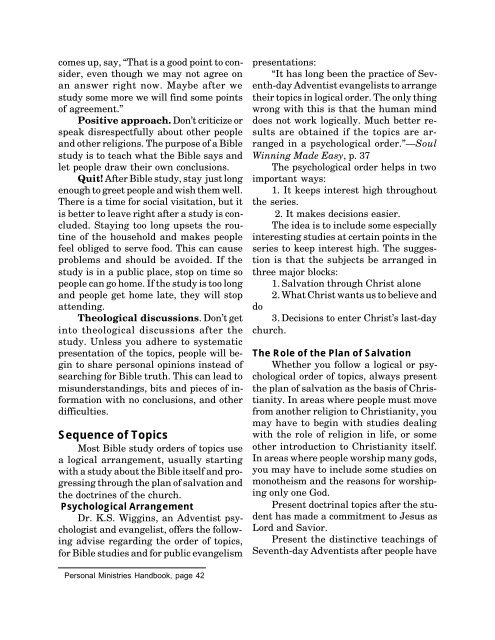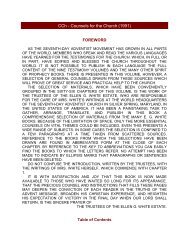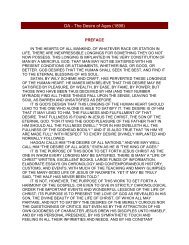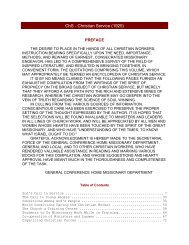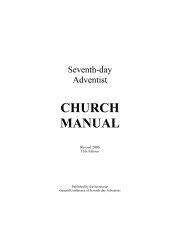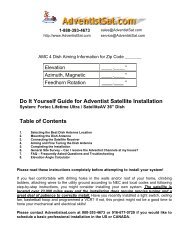Download - Seventh-day Adventist Church, Sierra Leone
Download - Seventh-day Adventist Church, Sierra Leone
Download - Seventh-day Adventist Church, Sierra Leone
Create successful ePaper yourself
Turn your PDF publications into a flip-book with our unique Google optimized e-Paper software.
comes up, say, “That is a good point to consider,<br />
even though we may not agree on<br />
an answer right now. Maybe after we<br />
study some more we will find some points<br />
of agreement.”<br />
Positive approach. Don’t criticize or<br />
speak disrespectfully about other people<br />
and other religions. The purpose of a Bible<br />
study is to teach what the Bible says and<br />
let people draw their own conclusions.<br />
Quit! After Bible study, stay just long<br />
enough to greet people and wish them well.<br />
There is a time for social visitation, but it<br />
is better to leave right after a study is concluded.<br />
Staying too long upsets the routine<br />
of the household and makes people<br />
feel obliged to serve food. This can cause<br />
problems and should be avoided. If the<br />
study is in a public place, stop on time so<br />
people can go home. If the study is too long<br />
and people get home late, they will stop<br />
attending.<br />
Theological discussions. Don’t get<br />
into theological discussions after the<br />
study. Unless you adhere to systematic<br />
presentation of the topics, people will begin<br />
to share personal opinions instead of<br />
searching for Bible truth. This can lead to<br />
misunderstandings, bits and pieces of information<br />
with no conclusions, and other<br />
difficulties.<br />
Sequence of Topics<br />
Most Bible study orders of topics use<br />
a logical arrangement, usually starting<br />
with a study about the Bible itself and progressing<br />
through the plan of salvation and<br />
the doctrines of the church.<br />
Psychological Arrangement<br />
Dr. K.S. Wiggins, an <strong>Adventist</strong> psychologist<br />
and evangelist, offers the following<br />
advise regarding the order of topics,<br />
for Bible studies and for public evangelism<br />
presentations:<br />
“It has long been the practice of <strong>Seventh</strong>-<strong>day</strong><br />
<strong>Adventist</strong> evangelists to arrange<br />
their topics in logical order. The only thing<br />
wrong with this is that the human mind<br />
does not work logically. Much better results<br />
are obtained if the topics are arranged<br />
in a psychological order.”—Soul<br />
Winning Made Easy, p. 37<br />
The psychological order helps in two<br />
important ways:<br />
1. It keeps interest high throughout<br />
the series.<br />
2. It makes decisions easier.<br />
The idea is to include some especially<br />
interesting studies at certain points in the<br />
series to keep interest high. The suggestion<br />
is that the subjects be arranged in<br />
three major blocks:<br />
1.Salvation through Christ alone<br />
2.What Christ wants us to believe and<br />
do<br />
3.Decisions to enter Christ’s last-<strong>day</strong><br />
church.<br />
The Role of the Plan of Salvation<br />
Whether you follow a logical or psychological<br />
order of topics, always present<br />
the plan of salvation as the basis of Christianity.<br />
In areas where people must move<br />
from another religion to Christianity, you<br />
may have to begin with studies dealing<br />
with the role of religion in life, or some<br />
other introduction to Christianity itself.<br />
In areas where people worship many gods,<br />
you may have to include some studies on<br />
monotheism and the reasons for worshiping<br />
only one God.<br />
Present doctrinal topics after the student<br />
has made a commitment to Jesus as<br />
Lord and Savior.<br />
Present the distinctive teachings of<br />
<strong>Seventh</strong>-<strong>day</strong> <strong>Adventist</strong>s after people have<br />
Personal Ministries Handbook, page 42


